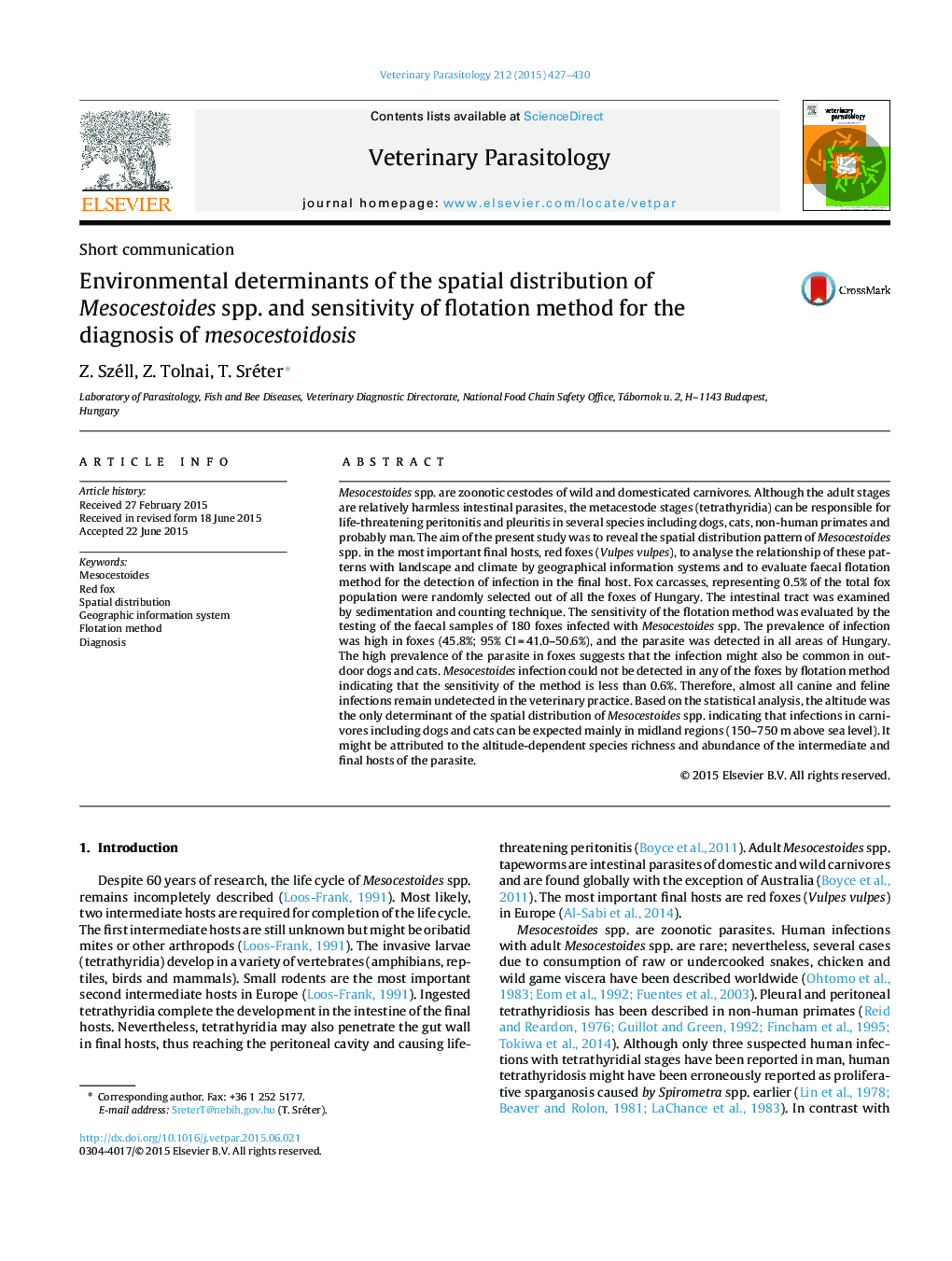| Article ID | Journal | Published Year | Pages | File Type |
|---|---|---|---|---|
| 5802388 | Veterinary Parasitology | 2015 | 4 Pages |
â¢The prevalence of Mesocestoides infection was high (45.8%) in foxes.â¢The altitude was the determinant of the spatial distribution of Mesocestoides spp.â¢It might be attributed to the altitude-dependent species richness of the hosts.â¢The sensitivity of the flotation method is less than 0.6% for the detection of infection.â¢Almost all Mesocestoides infections remain undetected in the veterinary practice.
Mesocestoides spp. are zoonotic cestodes of wild and domesticated carnivores. Although the adult stages are relatively harmless intestinal parasites, the metacestode stages (tetrathyridia) can be responsible for life-threatening peritonitis and pleuritis in several species including dogs, cats, non-human primates and probably man. The aim of the present study was to reveal the spatial distribution pattern of Mesocestoides spp. in the most important final hosts, red foxes (Vulpes vulpes), to analyse the relationship of these patterns with landscape and climate by geographical information systems and to evaluate faecal flotation method for the detection of infection in the final host. Fox carcasses, representing 0.5% of the total fox population were randomly selected out of all the foxes of Hungary. The intestinal tract was examined by sedimentation and counting technique. The sensitivity of the flotation method was evaluated by the testing of the faecal samples of 180 foxes infected with Mesocestoides spp. The prevalence of infection was high in foxes (45.8%; 95% CIÂ =Â 41.0-50.6%), and the parasite was detected in all areas of Hungary. The high prevalence of the parasite in foxes suggests that the infection might also be common in outdoor dogs and cats. Mesocestoides infection could not be detected in any of the foxes by flotation method indicating that the sensitivity of the method is less than 0.6%. Therefore, almost all canine and feline infections remain undetected in the veterinary practice. Based on the statistical analysis, the altitude was the only determinant of the spatial distribution of Mesocestoides spp. indicating that infections in carnivores including dogs and cats can be expected mainly in midland regions (150-750 m above sea level). It might be attributed to the altitude-dependent species richness and abundance of the intermediate and final hosts of the parasite.
